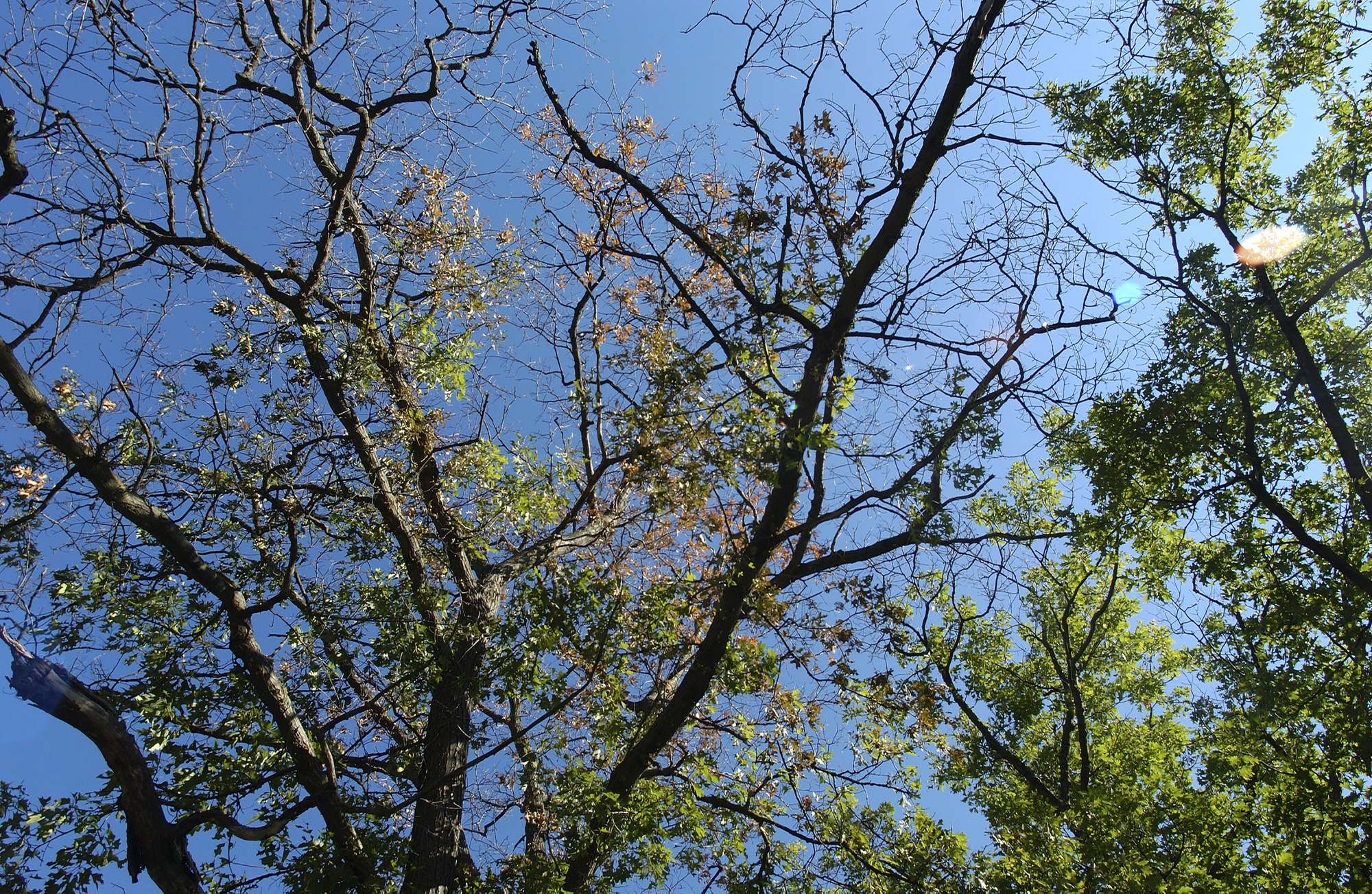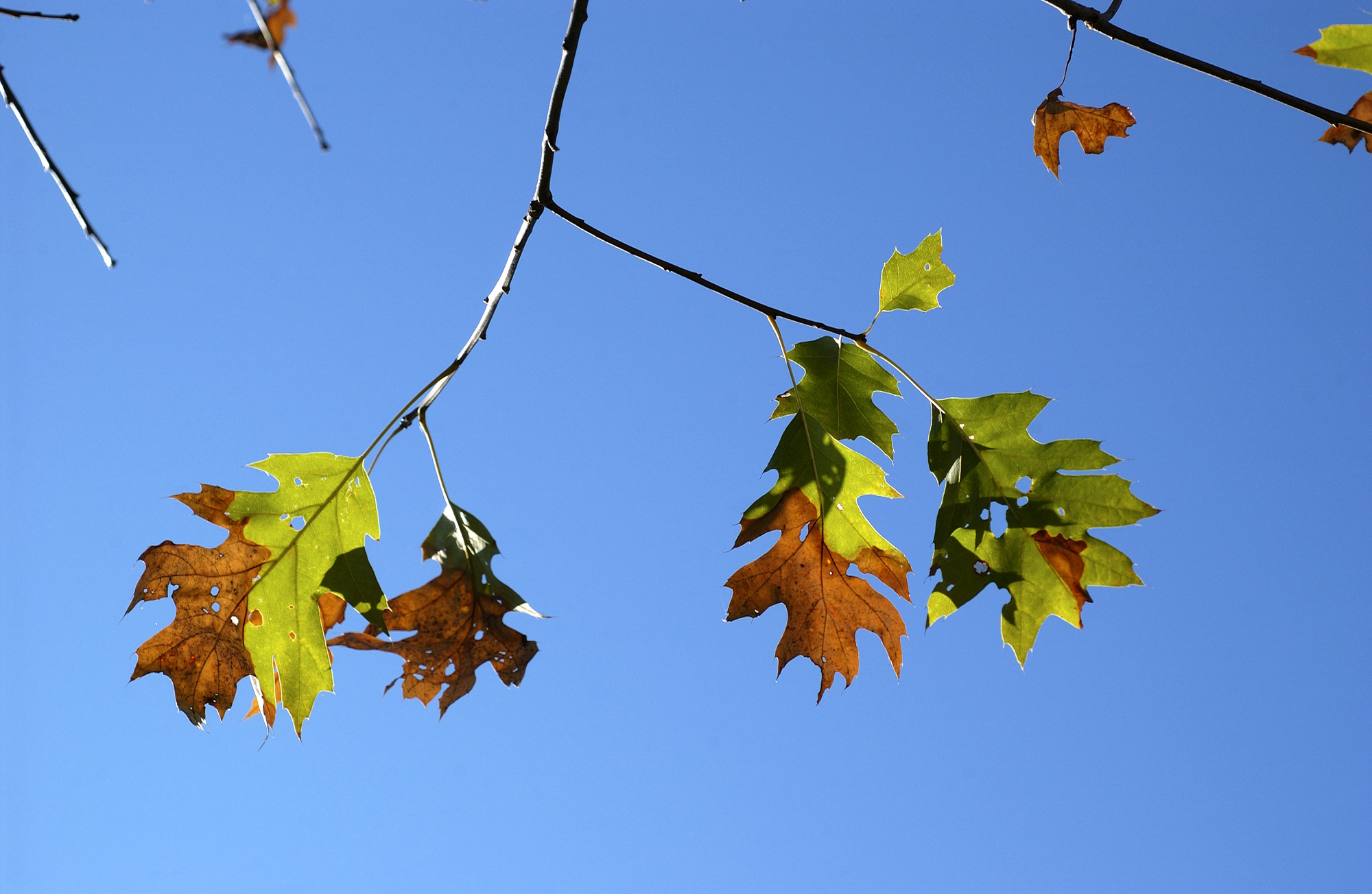|
Aug. 2, 2016
Contact: Bob Heyd, 906-228-6561, ext. 3023 or John Pepin, 906-226-1352
Help prevent the spread of oak wilt; don’t move firewood
 Now that the season has shifted to August – well past the “no pruning of oak” time of year (April 15 to July 15) – there still are steps residents can take to minimize the spread of the deadly oak wilt disease. Now that the season has shifted to August – well past the “no pruning of oak” time of year (April 15 to July 15) – there still are steps residents can take to minimize the spread of the deadly oak wilt disease.
Notably, Michigan Department of Natural Resources forest health experts say not moving firewood is critical to limiting oak wilt. Wood from oak wilt-killed trees can produce spores, which can infect healthy oaks if they’re wounded in spring the following year.
According to Bob Heyd, DNR forest health specialist, oak wilt is a serious disease of oak trees. It mainly affects red oaks, including northern red oak, black oak and pin oak. Red oaks often die within a few weeks after becoming infected. Because white oaks are more resistant, the disease progresses more slowly.
“The spread of oak wilt occurs overland to new areas from April through July as beetles move spores from trees killed this year by oak wilt to wounds on healthy oaks next year,” Heyd said.
“We need to stop that cycle, and that’s why it’s important for people not to move firewood for the rest of the summer and fall seasons,” he said. “With the transport of firewood and other tree-related activities, you have to assume the risk is present, whether you live in metro Detroit or in the Upper Peninsula.”
Oak wilt has been detected in Dickinson, Iron and Menominee counties in the Upper Peninsula and in Alcona, Allegan, Alpena, Antrim, Barry, Benzie, Berrien, Calhoun, Cass, Cheboygan, Clinton, Crawford, Genesee, Gladwin, Grand Traverse, Kalamazoo, Kalkaska, Kent, Lake, Leelanau, Lenawee, Livingston, Macomb, Manistee, Mason, Midland, Missaukee, Monroe, Montcalm, Montmorency, Muskegon, Newaygo, Oceana, Oakland, Ogemaw, Oscoda, Ottawa, Roscommon, Saginaw, Shiawassee, St. Joseph, Van Buren, Washtenaw, Wayne and Wexford counties in the Lower Peninsula.
Although oak wilt hasn't been confirmed in each of Michigan’s 83 counties, the need for vigilance is present statewide.
Once an oak is infected, the fungus moves to neighboring red oaks through root grafts. Oaks within approximately 100 feet of each other – depending on the size of the trees – have connected or grafted root systems. Left untreated, oak wilt will continue to move from tree to tree, progressively killing more red oak over an increasingly larger area.
“There are other oak problems that can easily be confused with oak wilt,” Heyd said. “Unlike most other problems, oak wilt causes the tree to suddenly drop its leaves in July or August. In fact, an oak wilt-infected tree dropping its leaves can happen all the way up to fall.”
Heyd advises residents who suspect their trees have oak wilt to first confirm their suspicion. “Once confirmed,” he said, “you’ll be given information on the variety of treatment options available.”
Trees that have died from oak wilt should be properly treated to prevent development of spore mats. These treatments include debarking, chipping or splitting, and drying the wood. For more information on the background, symptoms and prevention of oak wilt, visit the Michigan Society of American Foresters website.
Heyd also suggests requesting the help of the Michigan Department of Agriculture and Rural Development’s Forestry Assistance Program or Michigan State University Extension.
To report a suspected oak wilt site, email DNR-FRD-Forest-Health@michigan.gov or call 517-284-5895.
To learn more about other forest health issues in Michigan, go to www.michigan.gov/foresthealth.
/Note to editors: Accompanying photos are available for download below. Suggested caption information follows.
oak_wilt_canopy.jpg: An active oak wilt disease pocket. Note that affected trees still have some leaves attached.
oak_wilt_leaves.jpg: Oak leaves affected by oak wilt disease./
The Michigan Department of Natural Resources is committed to the conservation, protection, management, use and enjoyment of the state’s natural and cultural resources for current and future generations. For more information, go to www.michigan.gov/dnr.
|

 Now that the season has shifted to August – well past the “no pruning of oak” time of year (April 15 to July 15) – there still are steps residents can take to minimize the spread of the deadly oak wilt disease.
Now that the season has shifted to August – well past the “no pruning of oak” time of year (April 15 to July 15) – there still are steps residents can take to minimize the spread of the deadly oak wilt disease.





